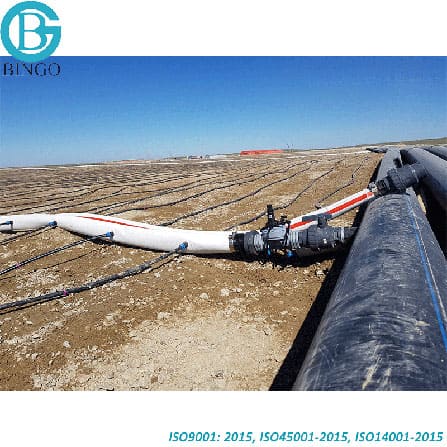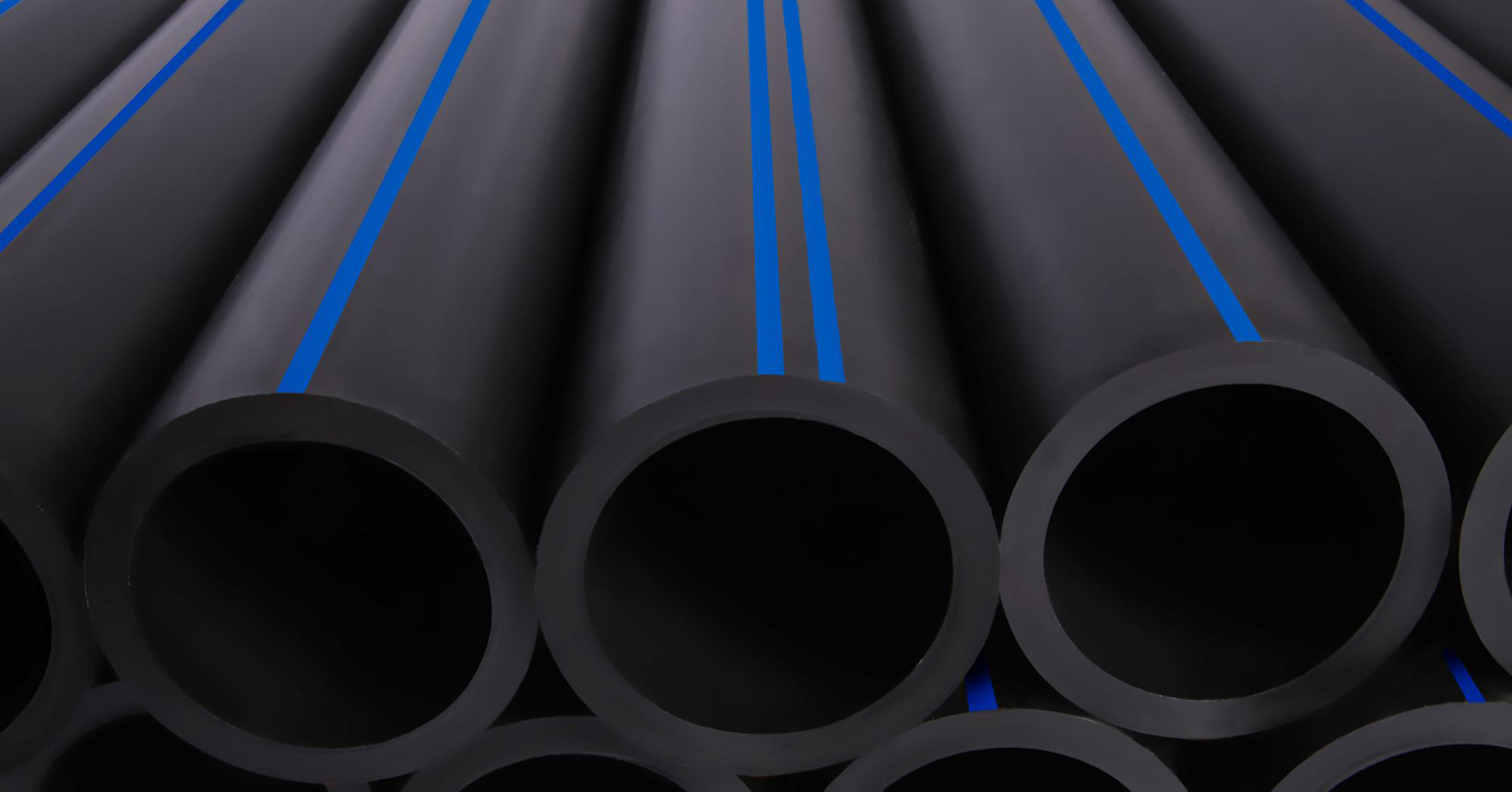The Role of Pipe Manufacturing Midland TX in Building Infrastructure
Wiki Article
Discover the Manufacturing Refine Behind High-Quality HDPE Pipe and Its Applications
The production process of premium HDPE pipelines is intricate and systematic. It begins with the choice of raw products that improve performance. Following this, ethylene undergoes polymerization to develop material, which is then formed via extrusion. Quality control is critical, guaranteeing that the last product fulfills rigorous standards. The trip of HDPE pipelines does not finish with manufacturing. Their applications throughout various industries reveal a wider significance worth analyzing.Comprehending HDPE: Features and Advantages

High-density polyethylene (HDPE) is a flexible polycarbonate known for its toughness and resistance to different ecological elements. This product shows outstanding tensile strength, making it suitable for requiring applications. Its low-density structure adds to a light-weight item, facilitating convenience of managing and installment. HDPE likewise showcases remarkable resistance to chemicals, which decreases destruction when exposed to severe compounds.
The product's low wetness absorption further boosts its longevity, making it excellent for use in pipes and storage containers. Additionally, HDPE is immune to ultraviolet (UV) radiation, ensuring that items preserve their honesty also when subjected to sunlight. Furthermore, its flexibility enables the development of intricate shapes without endangering strength. The green nature of HDPE, usually acquired from recycled materials, contributes to its appeal, promoting sustainable practices in production. Overall, these residential or commercial properties and advantages make HDPE a favored selection for numerous commercial and consumer applications.
Basic Material Choice for HDPE Manufacturing
The option of resources for HDPE production is important to verify the end product satisfies the preferred specs and top quality criteria. High-density polyethylene (HDPE) is mainly created from polymerized ethylene, stemmed from fossil gas such as gas or petroleum. The high quality of these feedstocks significantly affects the mechanical and thermal buildings of the last HDPE.Ingredients additionally play a considerable duty in boosting HDPE's performance, including anti-oxidants, UV stabilizers, and colorants, which boost durability and resistance to ecological variables. The selection process must think about not only the chemical structure of the raw products yet additionally their processing characteristics to assure effective manufacturing.
Additionally, the sourcing of basic materials must prioritize sustainability and compliance with ecological laws, as accountable methods are important in today's market. Inevitably, cautious raw product choice lays the foundation for generating high-quality HDPE pipes suitable for diverse applications.
The Extrusion Process: Shaping HDPE Pipeline
The extrusion process plays an essential function in shaping HDPE pipelines, beginning with meticulous material prep work techniques that ensure optimal circulation and uniformity. Equally essential is the style of the die, which directly influences the final measurements and surface area top quality of the pipe. Together, these elements add greatly to the efficiency and top quality of HDPE pipeline production.Product Preparation Techniques
Reliable production of HDPE pipelines begins with meticulous product preparation methods, particularly the extrusion process. During this stage, high-density polyethylene resin is very first dried to remove moisture, guaranteeing optimal circulation attributes. The material is then fed into the extruder, where it undertakes home heating and melting, changing into a viscous state. This home heating process is carefully managed to keep the material's stability and efficiency. The liquified HDPE is required through a die, forming it into a constant pipeline kind. Appropriate temperature level administration during extrusion is essential, as it directly affects the material's residential or commercial properties and the end product top quality. As soon as formed, the HDPE pipeline is cooled down and reduced to defined lengths, ready for succeeding processing and applications.Die Layout Value
Precision in die design plays an important duty in the extrusion procedure of HDPE pipes. The die works as the final shaping device, directly influencing the pipeline's measurements, wall density, and surface area coating. A properly designed die warranties consistent product circulation, minimizing flaws such as abnormalities and weak places. The geometry of the die have to be enhanced to fit the particular homes of HDPE, including its viscosity and thermal habits throughout extrusion. Furthermore, the cooling price of the product as it travels through the die can markedly influence the pipeline's structural integrity. Spending in sophisticated die technology is essential for makers aiming to generate premium HDPE pipes that satisfy industry standards and client expectations.Quality Assurance Steps in HDPE Production
Numerous elements affect the high quality of HDPE pipe production, efficient top quality control measures are critical to assure uniformity and integrity in the last item (Pipe Supplier American Plastics Midland). Key quality assurance techniques include strenuous material assessment, validating that the raw polyethylene fulfills established requirements for purity and thickness. Throughout the extrusion process, specifications such as temperature, pressure, and cooling time are very closely kept an eye on to maintain dimensional precision and structural stabilityAdditionally, post-production screening is important; manufacturers typically conduct hydrostatic tests to analyze the pipeline's stamina and resistance to pressure. Aesthetic examinations for surface defects additionally improve top quality assurance. Qualification from appropriate criteria organizations, like ASTM or ISO, gives an added layer of reliability. By executing these thorough high quality control measures, makers can reduce issues, enhance efficiency, and make sure that the HDPE pipes satisfy the particular requirements of different applications, ultimately leading to consumer contentment and count on the item.
Applications of HDPE Pipe Throughout Industries
HDPE pipelines are utilized across numerous industries as a result of their durability and versatility. In water circulation systems, they ensure reliable shipment, while in wastewater management, they provide reputable services for waste transportation. In addition, farming irrigation networks take advantage of HDPE's resistance to corrosion and versatility, making it an ideal choice for contemporary farming methods.
Water Distribution Equipments
A considerable number of industries rely upon high-density polyethylene (HDPE) pipelines for reliable water distribution systems. Known for their resilience and resistance to corrosion, HDPE pipes are widely utilized in municipal water networks, farming watering, and commercial applications. Their lightweight nature facilitates simple handling and setup, lowering labor prices and time. In addition, HDPE pipelines can fit different pressure degrees, making them appropriate for both low and high-pressure systems. hdpe pipe in stock Midland TX. The versatility of the product enables seamless integration into existing infrastructure, reducing the requirement for extensive excavation. HDPE's resistance to chemical seeping guarantees that the water supplied remains secure and tidy, making it a suitable choice for preserving the quality of drinkable water throughout various industries.Wastewater Management Solutions
Efficient water circulation systems additionally pave the means for cutting-edge wastewater administration solutions, where high-density polyethylene (HDPE) pipes play a significant duty. Prominent for their toughness and resistance to rust, HDPE pipelines check here are optimal for moving wastewater in different setups. Their adaptability enables for easy installation in intricate settings, reducing the requirement for considerable excavation. In addition, HDPE's smooth interior surface minimizes friction, boosting flow prices and efficiency. These pipelines are also resistant to chemical leaching, guaranteeing that impurities do not compromise the surrounding atmosphere. Industries, towns, and therapy facilities increasingly depend on HDPE pipes for their dependability and long life, making them a preferred choice for modern wastewater management systems. This flexibility emphasizes the crucial value of HDPE pipes across countless applications.Agricultural Watering Networks
Agricultural irrigation networks profit greatly from using high-density polyethylene (HDPE) pipelines, which supply effective and trustworthy water distribution to plants. HDPE pipelines are light-weight, making them easy to transport and set up, while their flexibility enables numerous setups in varied surfaces. These pipes show excellent resistance to deterioration, chemicals, and UV radiation, making certain resilience in rough agricultural settings. Additionally, their smooth indoor surface area minimizes friction loss, optimizing water flow and reducing power prices connected with pumping. The long life of HDPE pipes, usually surpassing 50 years, contributes to lower maintenance and substitute costs. Subsequently, farmers increasingly count on HDPE pipes to improve irrigation efficiency and promote sustainable farming methods, ultimately resulting in boosted plant returns and resource preservation.Future Trends in HDPE Pipeline Modern Technology
As the need for sustainable and effective infrastructure grows, innovations in HDPE pipe innovation are poised to transform various industries. Arising trends include the integration of smart technologies, such as sensors and IoT abilities, which promote real-time surveillance of pipe conditions, reducing maintenance costs and avoiding leakages. Additionally, the advancement of sophisticated production methods, such as 3D printing, is allowing the manufacturing of complex, personalized pipeline designs that satisfy particular job requirements.The emphasis on recycling and circular economy methods is driving the advancement of HDPE pipelines made from recycled products, boosting sustainability. Enhanced jointing techniques, such as electro-fusion and mechanical installations, are also boosting setup performance and integrity. The growing emphasis on ecological guidelines is pressing producers to take on greener manufacturing processes, making sure that HDPE pipes not just meet market criteria but likewise cultivate a more sustainable future for facilities growth.
Often Asked Concerns
Exactly How Does HDPE Compare to Other Plastic Materials?
HDPE outshines lots of various other plastic materials relating to resilience, chemical resistance, and adaptability. Its low density and high tensile toughness make it perfect for different applications, commonly going beyond alternatives in both performance and durability.What Are the Ecological Effects of HDPE Manufacturing?
The environmental influences of HDPE production include greenhouse gas emissions, power intake, and potential air pollution from making procedures. In addition, incorrect disposal can result in soil and water contamination, elevating worries regarding long-lasting eco-friendly effects.Can HDPE Pipes Be Reused?
Yes, HDPE pipelines can be reused. Many facilities approve utilized HDPE for handling, changing it into new products. This reusing adds to sustainability efforts, reducing plastic waste while saving sources and power in the production cycle.What Is the Life-span of HDPE Water Lines?

Just How Do Temperature Variations Affect HDPE Pipe Performance?
Temperature variations greatly affect HDPE pipeline efficiency, influencing flexibility and stamina. Heats can bring about softening, while reduced temperature levels may cause brittleness, inevitably influencing the pipe's durability and viability for different applications in varied settings.Report this wiki page